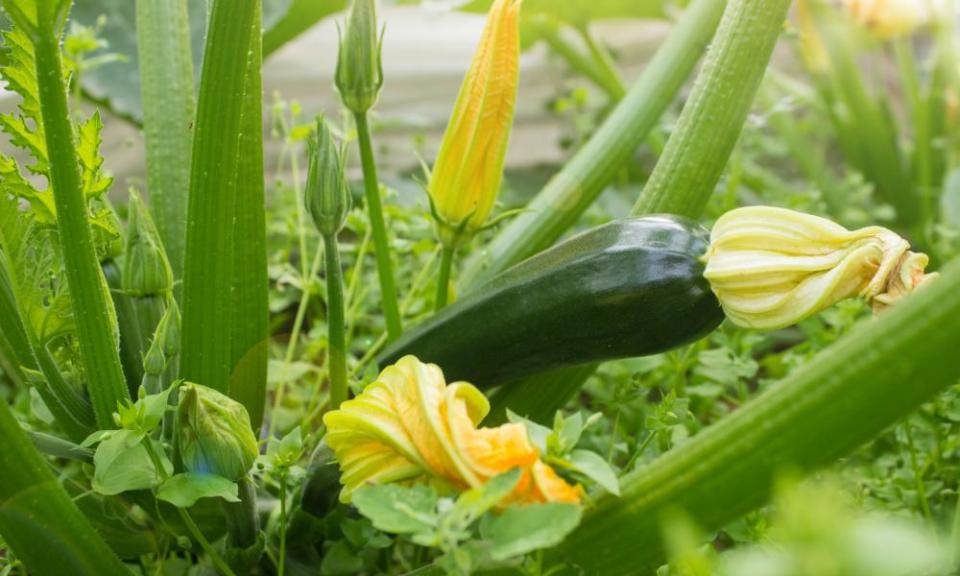How to protect summer vegetables from mildew

As summer swirls around our plants – rain and sun and rain again – other things start to grow. Tiny airborne spores float about looking for a surface on which to land and feed; if they find courgettes, marrows, pumpkins or cucumbers with those lush big leaves, they’ll happily alight and grow a fine powdery mildew across the surface.
What starts as a simple puff of mould on the upper and lower parts of the leaves will quickly cover the surface, until the whole thing is ghostly white. At the heart of the problem is drought stress. Unlike many other moulds, powdery mildew spores have an unusually high water content, which means they can survive in drier conditions. So when the weather gets warmer and drier, they thrive. On top of that, poor air circulation doesn’t help. If courgettes are nestled too closely to their neighbours, or your garden sits at the bottom of a dip, or you’re battling competition with the roots of a vast tree, then you are likely to find your crop succumbs.
Related: How to grow beetroot | Alys Fowler
In the short term, remove badly infected leaves and bury them deep in the compost. The latter recommendation is controversial, as the spores rest over winter in leaf litter, but you could bin all the courgette leaves into the municipal waste and still get this. Rather than create methane bombs in landfill, stoke up the compost and rot the leaves down quickly.
Be ruthless and remove neighbouring plants that are impeding air flow. Next, add mulch to lock water into the soil, but make sure not to bury the stems with it, as this won’t help. I find grass clippings an excellent mulch, but rotted straw is as good. This will reduce evaporation around the base of the plant. If it remains dry, water, but whatever you do, don’t get the surface of the leaves wet.

SB Plant Invigorator spray – a blend of seaweed, surfactants and nutrients – physically gums up the mildew. It is widely available, safe to use on edibles, and needs no harvest interval. A cheaper solution is the old milk trick (and it can be old milk). Dilute one part milk to nine parts water and spray every day for a week on both surfaces of the leaf. You have to keep this regime up though, or the mildew creeps back surprisingly quickly.
The best trick is prevention, so make a note to incorporate a lot more organic matter this autumn into the ground. Garden compost or well-rotted manure will improve moisture retention, as well as creating better air porosity in the soil. Healthy soil equals healthy roots, which means a happy life above, too.

